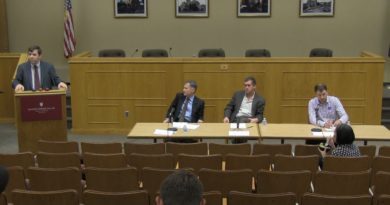How Mexico outfoxed Joe Biden on illegal immigration, knowing he’d never fight back
Purchase his book here.
By Todd Bensman on February 13, 2023
New York Post, February 13, 2023
The Mexican government was not happy with President Trump’s Remain in Mexico policies.
Facing threats of debilitating trade tariffs from Trump, Mexico had been forced to take on the burdens of housing, feeding, and caring for hundreds of thousands of migrant family groups either expelled by Trump or unable to proceed over the border. Many could not be easily deported to Africa, Cuba, Haiti, or one hundred other countries.
Once Trump’s expulsion policies took full effect, as the Texas Tribune put it, Mexico was quickly “overwhelmed by the number of migrants in its border cities.” Women with very young children that Trump expelled soon became a headache for Mexico, which by law had to care for them somewhere, somehow. They filled Mexico’s 58 detention centers to capacity.
And when those centers filled up, squalid camps began to form in parks or in the central squares of northern Mexican cities like Nuevo Laredo, Piedras Negras, Juarez, Acuña, and especially so in Tamaulipas State across from South Texas in the cities of Reynosa and Matamoros, long the most heavily trammeled border-crossing areas into the United States.
So Mexico began closely eyeing the American election, looking for the soonest possible relief should Joe Biden win.
Immediately after the election, the Mexican congress secretively passed a new and unusual law that had been pre-written and a pathway for its quick approval cleared.
On November 6, 2020 — within 72 hours of Joe Biden’s election — the “Various Articles of the Migration Law and the Law on Refugees are Reformed, Complementary Protection and Political Asylum in the Matter of Migrant Children” was on President Andrés Manuel López Obrador’s desk for signing.
On November 11, President Obrador signed it with no formal announcement or press coverage.
The law would be implemented 60 days later, on January 11, just before Trump was to leave office. Boiled down, the law prohibited federal detentions of migrant families with minor children — with or without parents — in all 58 Mexican detention facilities nationwide. To remain in compliance with Mexico’s laws requiring the feeding and sheltering of migrant children, the new law required the government to merely refer them to voluntary-stay shelters.
This meant that after January 11, 2021, Mexico could start emptying its detention centers, and thousands of families with their young children could travel freely inside the country, which everyone knew meant the U.S. border.
But what to do about Title 42, the COVID pandemic rule Trump had used to keep out those who tried to cross? The law addressed that: It gave individual Mexican states authority to refuse U.S. Title 42 expulsions — if the states deemed the private shelters as too full or to be closed for COVID.
The State of Tamaulipas, the most heavily trafficked by migrants, did just that. It refused to take Biden’s family expellees — on Biden’s Inauguration Day — saying it had no shelter space.
The collective effect of the law was that thousands of migrant families found that they were not only freed from Mexican detention centers, but that, when they crossed the U.S. border, the Americans would have to keep them. Mexican government officials wagered President Biden would take all the families without resistance and threaten nothing like Trump’s trade tariffs. They were right.
The impact was immediate. Family groups were coming in so hot and heavy they couldn’t be detained, and United States Citizenship and Immigration Services asylum officers could not even conduct credible fear interviews.
After processing the migrants at a local facility for a day or two, Border Patrol was releasing them on their own recognizance to a local nonprofit advocacy organization in Del Rio called the Val Verde Border Humanitarian Coalition. The volunteers were arranging buses and flights into the American interior to cities of the immigrants’ choice.
Shon Young, director of the Coalition, said the same thing was happening in towns far downriver from Del Rio. “For some reason, the day after inauguration,” Young explained, “we had a big influx of people. So we fired up the coalition at full speed.”
Before the inauguration, Border Patrol typically might bring three or four released immigrants a day to the coalition building, situated about a mile from the international bridge to Acuña. But on the very first day after the inauguration, Border Patrol started dropping off sixty to a hundred, Young said.
Young said his organization was arranging Greyhound buses and even, for those with money (usually the Haitians who’d been earning well in Chile for years), local flights out of Del Rio International Airport to whichever cities they picked for resettlement. Border Patrol was dropping off so many at the nonprofit’s campus, they had to move out the old fast to make way for the new, Young said.
The way it worked, Young explained in my first February 2, 2021 phone interview with him — and this would soon become normalized on an industrial scale — was that the families would cross the river and turn themselves in to any federal agent they could find or wait by a roadside until the agents found them.
The agents, who were used to doing most of the chasing around there — not the other way around — would transport them to a limited-capacity Border Patrol station just north of Del Rio and find it filled.
Since most ICE detention facilities were closed for COVID-19 and the Border Patrol stations were unsuited for high-volume, long-term family care, Border Patrol was quickly releasing them to Young’s group with legal papers called “Notice to Appear,” or NTAs, and Notices to Report, NTRs.
I later learned NTAs and NTRs were part of the new “honor system” that provided temporary legal residency for their bearers to remain inside the United States on a promise that they self-report to an ICE office in destination cities, presumably to initiate an asylum claim.
Border Patrol apprehensions of family unit individuals, almost all of them in Texas, rocketed from 4,406 in December 2020 to 54,132 by the end of March 2021, a 1,400% increase. Apprehensions of family units hit 86,631 for August of that year.
The numbers were particularly stark for unaccompanied minors. In fiscal year 2020, they numbered 33,239. Six times that many crossed in fiscal 2021, or 146,925 and 150,000 in fiscal 2022.
Another Biden change was that women in advanced stages of pregnancy, usually seven months, would be allowed in, no questions asked. The fathers of their unborn children got in with them, no proof necessary.
Diane Edrington, a nurse practitioner and medical director for Panama Mission who has volunteered with indigenous tribes, saw an immediate effect.
“They understood that if they were pregnant by seven months by the time they got to the border, they would be allowed to go through,” she said. “I was told they would get pregnant just for that reason. Everyone knew that this is the way to do it now. Let’s get pregnant and we can get through. That’s a free pass to get across. That’s common knowledge.”
Selfies showing videos of real families flashing the thumbs-up as they boarded their U.S. city-bound charter buses spread like wildfire online. Nothing the president or his people ever said again could overcome the narcotic allure of the selfie evidence showing smiling families holding up their new government Notice to Appear documents.
When Homeland Security Secretary Alejandro Mayorkas went on international TV to pronounce that “the border is closed,” their cell phones showed thousands of friends, neighbors, and third cousins quickly being released into America. So, the parade went on and on.
When Vice President Harris beseeched migrants during a June 2021 trip to Guatemala that immigrants were being expelled and, “Do not come. Do not come,” the migrants fact-checked their cell phones, saw that her words were untrue, and kept coming.






